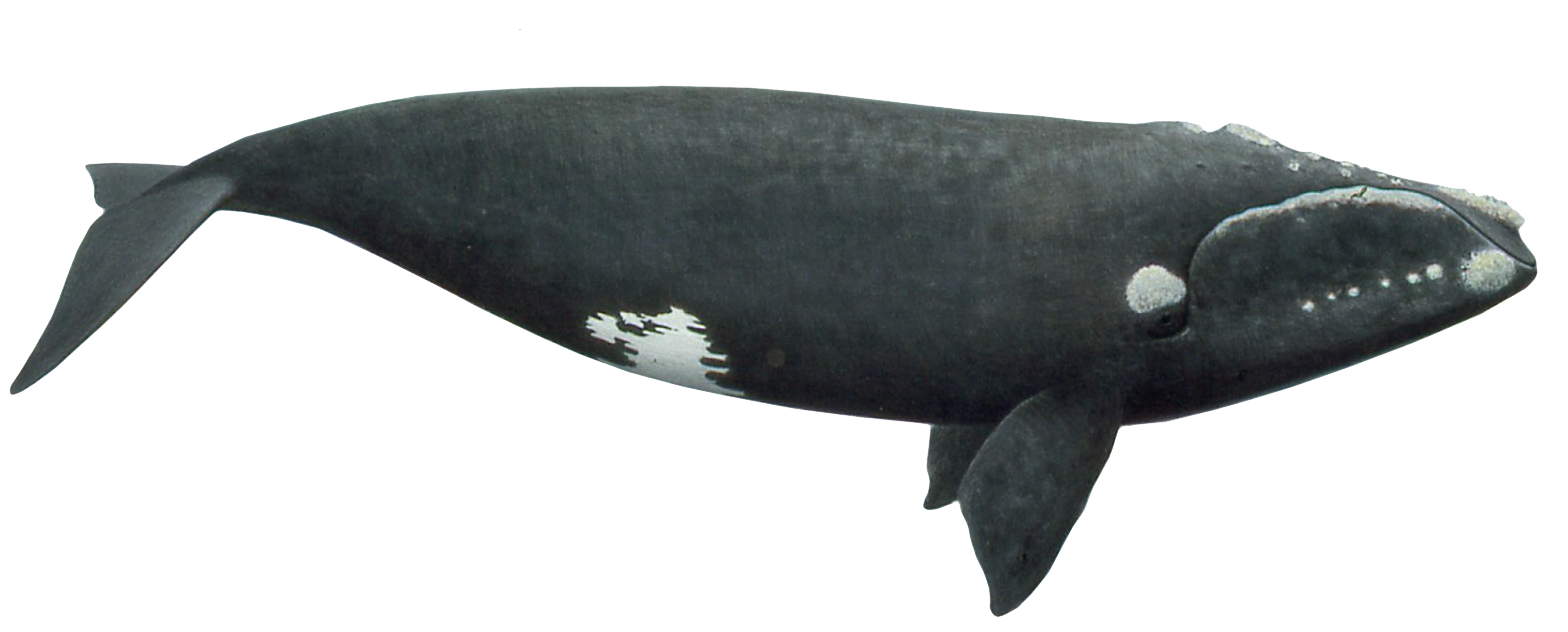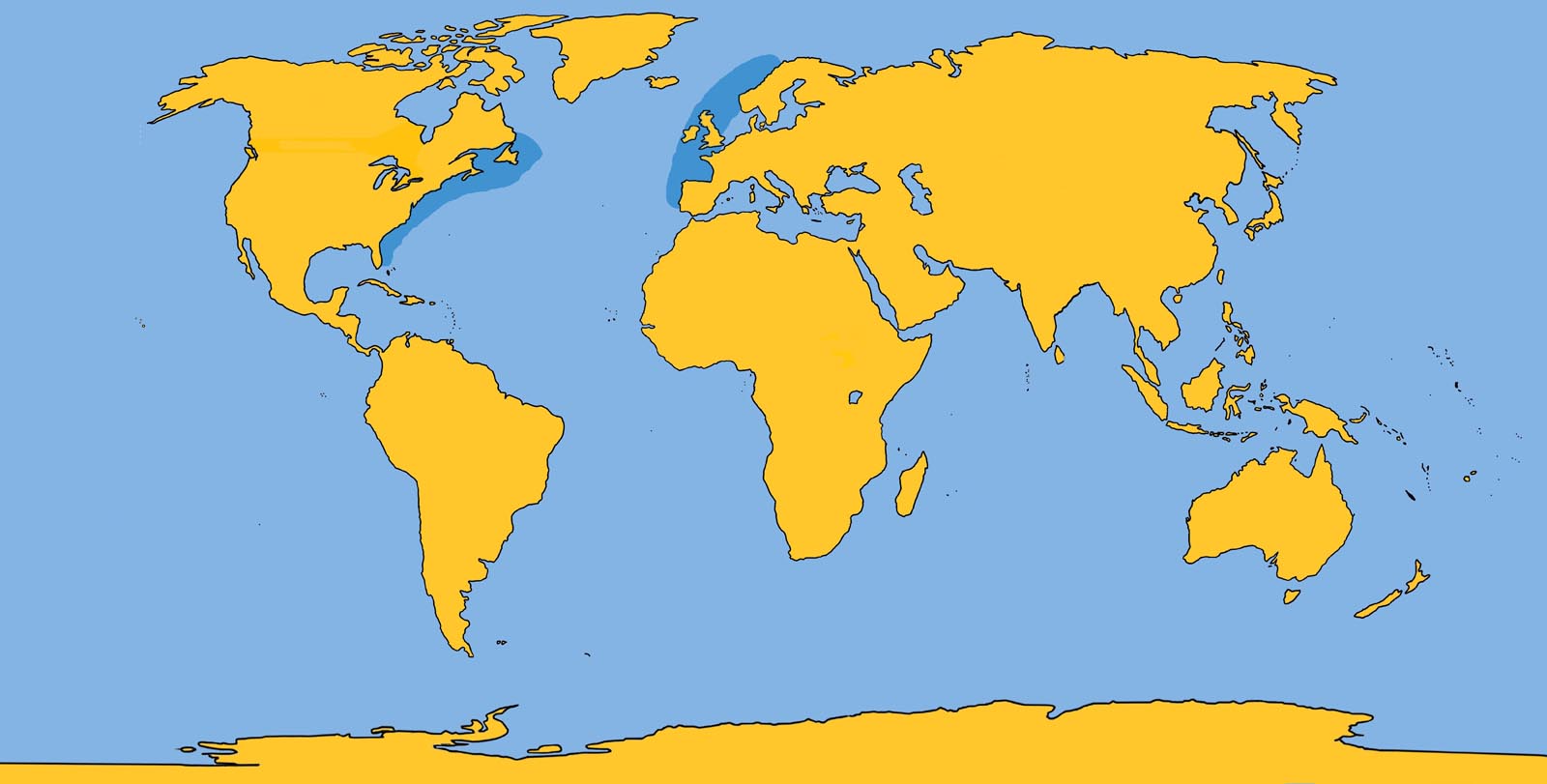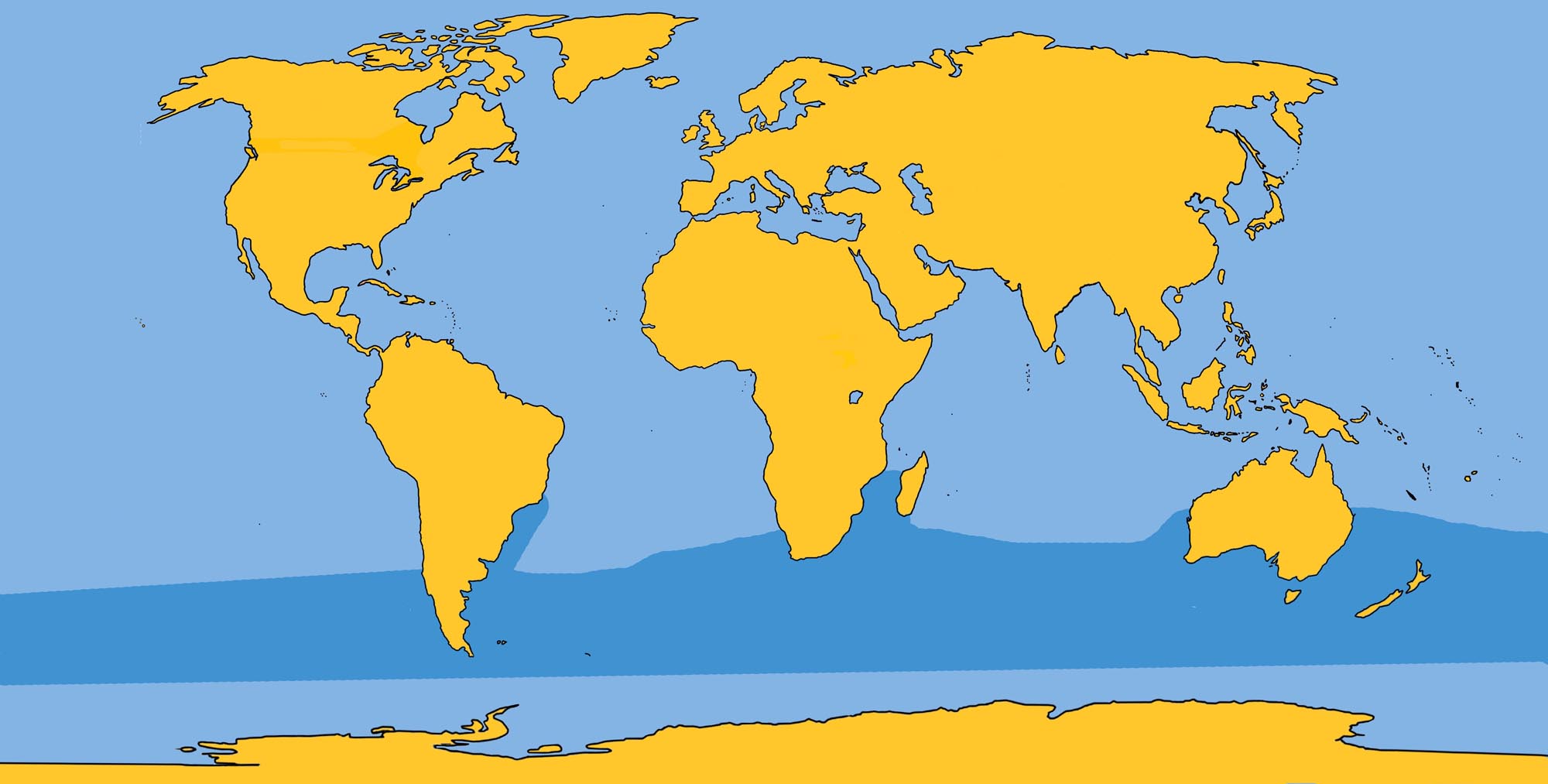Family: Balaenidae
Genus: Eubalaena
Species: E. glacialis (Müller, 1776)
Taxonomic Note: Geographically distinct populations are occasionally given their own subspecies classification, as follows: southern right whale, Eubalaena glacialis australis; North Pacific right whale, Eubalaena glacialis japonica; North Atlantic right whale, Eubalaena glacialis glacialis.
This stocky animal has large flippers and enormous, arching lower lips that cover its long, delicate baleen plates. Right whales possess unique natural patches on the tip of the lower jaw, near the eyes and along the cheeks, called callosities. These growths are home for whale lice and, less frequently, barnacles, and vary in size and location with each individual allowing positive identification for researchers. Males possess larger and more numerous callosities than females.
Right whales are very slow swimmers and unafraid of divers who approach close enough for physical contact. Today, they are perhaps the rarest of the great whales and study of certain populations such as those that migrate to Patagonia each year indicates that the population is not increasing.
Courtship and mating among right whales may last for days, weeks, or even months at a time. Females can avoid mating if they choose; they may swim upside down, raise the rear portion of their bodies out of the water, or outmaneuver rejected males.
One of the right whale’s most fascinating habits is to raise its flukes into the air and use them as a sail, letting the wind move the animal through the water. Dr. Roger Payne, the first to report this activity, says that the animals will often swim back to the beginning point in order to repeat the maneuver. Payne also describes the personalities of rights whales as playful and mischievous, for any object placed in the water is quickly poked, pushed, and bumped. Such “toys” may include, as Dr. Payne notes, tide markers, inflatable boats, and even a specially built underwater observation vehicle.
Physical Description: Right whales are extremely fat. The large bowed mouth and other parts of the head possess callosities — cornified growths inhabited by whale lice of a species which exists only on right whales. Often the skin of the back is observed peeling and sloughing off, making the animal appear unhealthy, although the condition is normal for all cetaceans.
Color: Black with white patches on the ventral region, particularly around the anus. Regions of the body may be mottled with brown.
Fins and Flukes: Right whales have no dorsal fin. Their flippers are paddle-shaped. The flukes are extremely wide, thin, pointed or slightly rounded at the tips, with a definite median notch.
Length and Weight: Right whales occasionally reach 58 ft (17.7 m) and may exceed 100 tons (90,000 kg), although normally they are 50 ft (15 m) long and weigh about 70 tons (64,000 kg).
Baleen Plates: From 225 to 250 pairs of black baleen plates on each side of the upper jaw, with a maximum length of 7.2 ft (2.2 m).
Feeding: This species is a selective feeder, taking mostly copepods and euphausids.
Breathing and Diving: Right whales are very slow swimmers. They blow several times prior to a longer, presumably deeper dive lasting 10 to 20 minutes. Two separate spouts are visible, one from each nostril. They are capable of deep dives but are generally believed to remain in shallow waters.
Mating and Breeding: Calves are born 16 to 19 ft (5 to 6 m) long in the winter after a gestation period believed to be 12 months. Newborns remain with their mothers for a full year with weaning when the calf has grown to about 28 ft (8.5 m). Sexual maturity in males is reached at 49 ft (15 m); at 52 ft (16 m) in females. Females are thought to give birth every third year.
Herding: Individually, to groups of up to five or six.
Distribution: The various alleged subspecies are found in all temperate oceans. The southern right whale is found through the Antarctic, southern waters of South America, southern waters of South Africa, Australia, New Zealand, South Georgia, and also observed in the Indian Ocean and near the coast of Chile. The North Pacific right whale is found from Japan throughout the waters of the Kamchatka Peninsula and the Aleutian Islands, south throughout the waters of the states of Washington and Oregon as far south as Baja California. The North Atlantic right whale is found from Spitzbergen, Bear Island, and Nordkap as far south as Spain, Portugal, North Africa, the Carolinas, Florida, and the southern range of the Gulf of Mexico.
Migration: In the winter, the North Pacific and North Atlantic animals migrate to the southern ends of their range, and the southern animals migrate to the northern end of their range.
NORTH ATLANTIC RIGHT WHALE DISTRIBUTION
SOUTHERN RIGHT WHALE DISTRIBUTION










